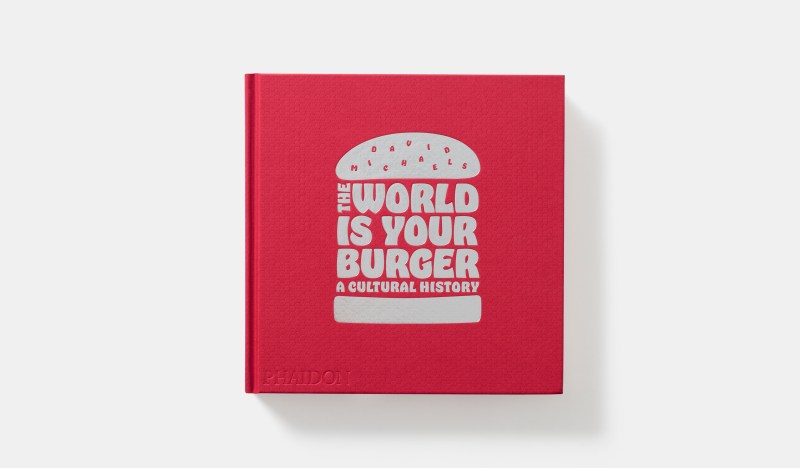
There is no craving quite as intense as the craving for a burger. The toothsome mix of savory beef, gooey cheese, crisp lettuce, and a springy bun is love at first bite and one of those meals you wish could last forever. The burger has reached global cult status, which Phaidon and author David Michaels celebrate in their new book The World is Your Burger: A Cultural History.
Related:
Michaels remembers exactly when his obsession for burgers began. It all started when he was seven years old and sunk his teeth into his first burger at Wimpy Bar in London, a chain that started in Bloomington, Indiana in 1934 and moved across the pond by 1954 (the chain no longer operates in the United States). Five years later, he experienced his first McDonald’s Quarter Pounder with cheese, and his lifelong quest for the best burgers on the planet began. For the last 10 years, Michaels has been researching the iconic burger with a collection of essays, photographs and recipes that tell the story of its humble American beginning to the worldwide phenomenon that it is today.
The World is Your Burger is the ultimate burger encyclopedia that’s divided into five main sections: Origins, The Modern Burger, Recipes, Eating the Burger and Cultural Impact, with other extras along the way. Origins walks the reader through a timeline of important burger moments and has sections dedicated to the original market players like White Castle, Fat Burger and, of course, McDonald’s. The Modern Burger section dives into how the burger is no longer just a fun family snack but a chance for true culinary experimentation. It starts with the opening of London’s original Hard Rock Cafe in 1971 and profiles favorites like Japan’s MOS Burger, San Antonio’s Fuddruckers and New York’s contemporary icon Shake Shack.

When you’re fully versed in the burger’s cultural significance, it’s time to try your hand at making one yourself. The Recipes section profiles chefs like Angie Mar and Daniel Boulud and shares




